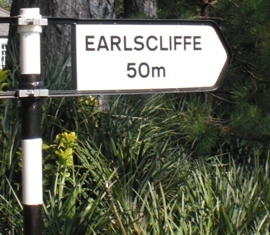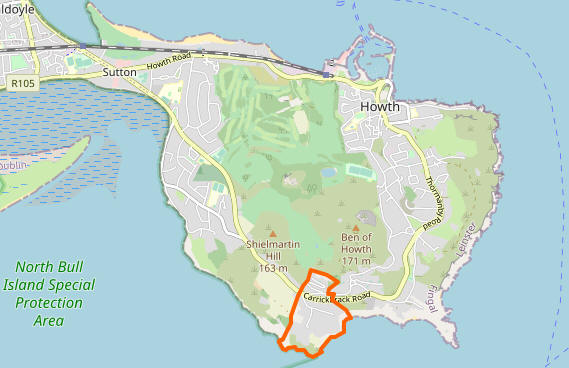History of Earlscliffe House

Earlscliffe house, constructed around 1844/5, predates the Great Famine (also known as the Great Hunger) and sits atop the hillside, offering breathtaking views of Doldrum Bay in the townland of Censure (Seinséar). When it was originally built, there were only a few other houses in the vicinity. However, the construction of the railway connecting Howth and Dublin in 1846 along with better roads leading to the harbour led to an increase in local housing density.
Presumably intended as a summer retreat for its inhabitants, Earlscliffe house primarily offered its residents unparalleled vistas of Dublin Bay. Additionally, it granted them access to bathing in the nearby seawater. Until the mid-twentieth century, much of the land surrounding the house was utilized for farming purposes.
Throughout its history, Earlscliffe has seen various owners, beginning with possibly Alderman Cornelius Egan, and later including notable figures such as Royal Navy Captain William Bunbury McClintock, Trinity's Provost John Pentland Mahaffy, the Very Rev. C.T. Ovenden, Dean of St. Patrick's Cathedral in Dublin, and Margaret Gough, daughter-in-law of Lady Gregory. Other notable residents include Dr. Ella Webb, Sir John Lumsden, and the grandson of William Martin Murphy. The timeline extends to the era of Dr. David Robinson and his family, as well as the subsequent efforts of the Robinson and Foley families to preserve Earlscliffe as a world-renowned horticultural haven.
Within the following pages, you will find a concise history of both the house at Earlscliffe and its gardens, chronicling its construction, ownership, and transformation over time.
List of Earlscliffe Residents
1844 to 1864 - Cornelius Egan
1864 to 1878 - Bunbury McClintock
1878 to 1896 - The Knox family
1896 to 1901 - John Randal Plunkett
1901 to 1922 - John Pentland Mahaffy
1922 to 1924 - CT Ovenden
1924 to 1927 - Robert Rooney
1927 to 1930 - Dr Ella Webb
1930 to 1945 - Sir John Lumsden
1945 to 1949 - William Martin Murphy
1949 to 1950 - Lily Margaret Graham Gough
1950 to 1952 - Stanley-Clarke
1952 to 1961 - Woods
1961 to 1969 - Knowles
1969 to today - Robinson & Foley family
* The Great Famine (Irish: an Gorta Mór) or the Great Hunger was a period of mass starvation, disease, and emigration in Ireland between 1845 and 1852. It is sometimes referred to, mostly outside Ireland, as the Irish Potato Famine, because about two-fifths of the population was solely reliant on this cheap crop for a number of historical reasons. During the famine, approximately 1 million people died and a million more emigrated from Ireland, causing the island's population to fall by between 20% and 25%. [Source Wikipedia]
** Earlscliffe house is in the townland of Censure (shown in orange below), but part of the gardens to the east are actually in the townland of Howth.

